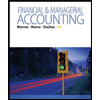
Concept explainers
a)
Equity investment:
Equity investments are stock instruments which claim ownership in the investee company and pay dividend revenue to the investor company.
Equity method:
Equity method is the method used for accounting equity investments which claim a significant influence of above 20% but less than 50% in the outstanding stock of the investee company.
Journal entry is a set of economic events which can be measured in monetary terms. These are recorded chronologically and systematically.
Debit and credit rules:
- Debit an increase in asset account, increase in expense account, decrease in liability account, and decrease in
stockholders’ equity accounts. - Credit decrease in asset account, increase in revenue account, increase in liability account, and increase in stockholders’ equity accounts.
To journalize: The stock investment transactions for Company B, under the equity method.
(b)
The stock investment balance for Company B.
(c)
To discuss: The differences between valuation of investment under equity method and fair value method
Want to see the full answer?
Check out a sample textbook solution
Chapter 13 Solutions
FINANCIAL+MANG.-W/ACCESS PRACTICE SET
- Please provide the answer to this general accounting question with proper steps.arrow_forwardOrville Manufacturing Company's work-in-process inventory on August 1 has a balance of $32,400, representing Job No. 527. During August, $61,500 of direct materials were requisitioned for Job No. 527, and $42,800 of direct labor cost was incurred on Job No. 527. Manufacturing overhead is allocated at 125% of direct labor cost. Actual manufacturing overhead costs incurred in August amounted to $52,500. No new jobs were started during August. Job No. 527 is completed on August 28. Is manufacturing overhead overallocated or underallocated for the month of August and by how much? Answerarrow_forwardNeil Enterprises has total assets of $4,800,000 and liabilities of $1,750,000. The company needs to raise $2,300,000 to purchase new equipment for expansion. They could either borrow the funds using 12-year bonds or issue 200,000 shares of common stock at an estimated market price of $11.50 per share. What is the debt-to-equity ratio before any choices are made? solve this financial accounting problemarrow_forward
 Financial AccountingAccountingISBN:9781305088436Author:Carl Warren, Jim Reeve, Jonathan DuchacPublisher:Cengage Learning
Financial AccountingAccountingISBN:9781305088436Author:Carl Warren, Jim Reeve, Jonathan DuchacPublisher:Cengage Learning Financial Accounting: The Impact on Decision Make...AccountingISBN:9781305654174Author:Gary A. Porter, Curtis L. NortonPublisher:Cengage Learning
Financial Accounting: The Impact on Decision Make...AccountingISBN:9781305654174Author:Gary A. Porter, Curtis L. NortonPublisher:Cengage Learning Intermediate Accounting: Reporting And AnalysisAccountingISBN:9781337788281Author:James M. Wahlen, Jefferson P. Jones, Donald PagachPublisher:Cengage Learning
Intermediate Accounting: Reporting And AnalysisAccountingISBN:9781337788281Author:James M. Wahlen, Jefferson P. Jones, Donald PagachPublisher:Cengage Learning Financial & Managerial AccountingAccountingISBN:9781285866307Author:Carl Warren, James M. Reeve, Jonathan DuchacPublisher:Cengage Learning
Financial & Managerial AccountingAccountingISBN:9781285866307Author:Carl Warren, James M. Reeve, Jonathan DuchacPublisher:Cengage Learning



